
 Data Structure
Data Structure Networking
Networking RDBMS
RDBMS Operating System
Operating System Java
Java MS Excel
MS Excel iOS
iOS HTML
HTML CSS
CSS Android
Android Python
Python C Programming
C Programming C++
C++ C#
C# MongoDB
MongoDB MySQL
MySQL Javascript
Javascript PHP
PHP
- Selected Reading
- UPSC IAS Exams Notes
- Developer's Best Practices
- Questions and Answers
- Effective Resume Writing
- HR Interview Questions
- Computer Glossary
- Who is Who
How to Quickly Remove all Numberings or Bullet Points from an Excel Column?
Working with data in Microsoft Excel often requires organizing information using bullet points or numbering systems. However, there may be instances where we want to remove all numberings or bullets from a specific column quickly and efficiently. Numberings and bullet points are widely used in various applications, including spreadsheet programs like Microsoft Excel. These formatting options serve to enhance the visual clarity, organization, and overall readability of data. However, it is important to understand both the advantages and disadvantages associated with using numberings or bullet points in Excel.
Pros of Using Numberings or Bullet Points
-
Enhanced Visual Clarity
Using numberings or bullet points helps to highlight important information within a dataset by providing clear differentiation between individual items. This simplifies the process of scanning through long lists or datasets as it makes relevant entries more noticeable at a quick glance.
-
Better Organization
By utilizing numberings or bullet points, you can organize your data hierarchically or categorically within Excel cells. This enables users to create ordered lists, group related items together, establish sequences, prioritize tasks, and maintain an organized structure for ease of reference.
-
Improved Readability
Implementing numberings or bullet points enhances the readability factor significantly within excel sheets as they break down complex information into smaller digestible chunks. Each point designated by a numbering system allows readers to focus on one idea at a time while being able to easily jump between different sections without feeling overwhelmed.
Disadvantages of Using Numberings or Bullet Points
-
Limited Flexibility for Data Manipulation
When using numberings or bullet points in Excel cells, their primary purpose is presentation rather than actual numerical manipulation. As such, these formatting options restrict users from performing mathematical operations directly on those cells containing numbered/bulleted content.
-
Data Entry Challenges
While creating numbered/bulleted lists may seem straightforward initially; when adding new entries dynamically (like inserting rows), maintaining consistent numbering sequencing becomes challenging manually since modifying existing numbers requires adjustments throughout the list ? leading to potential errors if not done carefully.
-
Limited Customization Options
Excel's native bullet points or numbering schemes often have predefined styles, which may not always align with specific formatting requirements. As a result, users may have to settle for limited customization options instead of achieving visual consistency with the rest of their spreadsheet design.
Example 1: Removing the bullet points using Find and replace function
Step 1
The Find and Replace function within Excel offers a convenient way to remove numberings or bullet points from an entire column simultaneously. Open the Microsoft Excel file and select the relevant worksheet containing the target column.
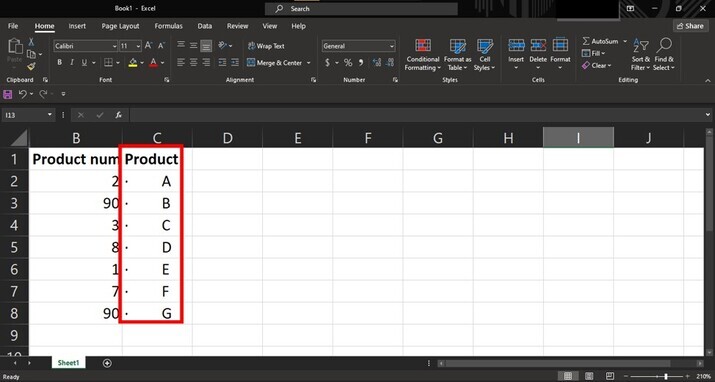
Step 2
Press "Ctrl + H" on your keyboard or head over to the Home tab and click on "Replace" under Editing section. The Find and Replace dialog box will appear. In the "Find what" field, enter either a bullet point (?) or numbering symbol (like '1.' for ordered lists). Consider checkbox options like "Match entire cell contents" for more focused replacements
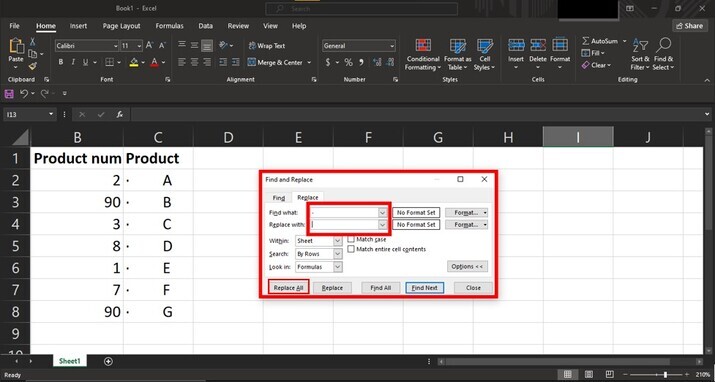
Step 3
Leave the "Replace with" field empty, setting it as blank. Note that removing bullets will replace them with spaces; consequently, removing numbers typically leaves behind gaps in cells instead of compacting cell content.

Example 2: Removing the bullet points using Text?to?Columns option
Step 1
Text?to?Columns is primarily utilized for splitting cell contents based on delimiters; surprisingly, it can also help remove unwanted numbering or bullet points effectively. In the excel sheet, Highlight the target columns.

Step 2
Navigate to 'Data' > 'Text?to?Columns.'
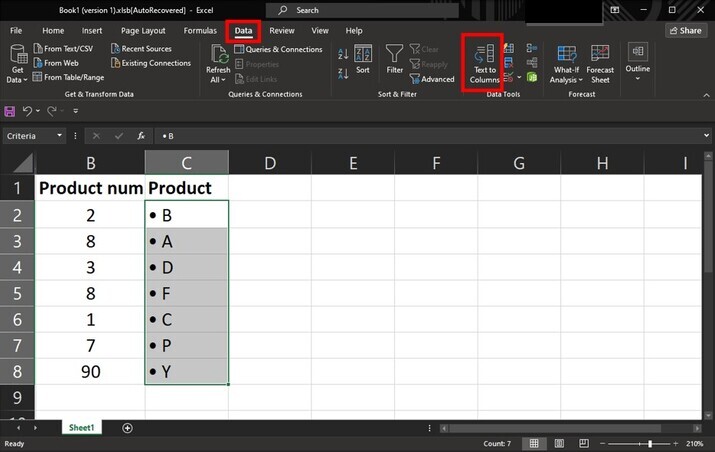
Step 3
In Step 2 of this wizard?like tool, select either "Delimited" or "Fixed Width," depending on how the information is arranged.
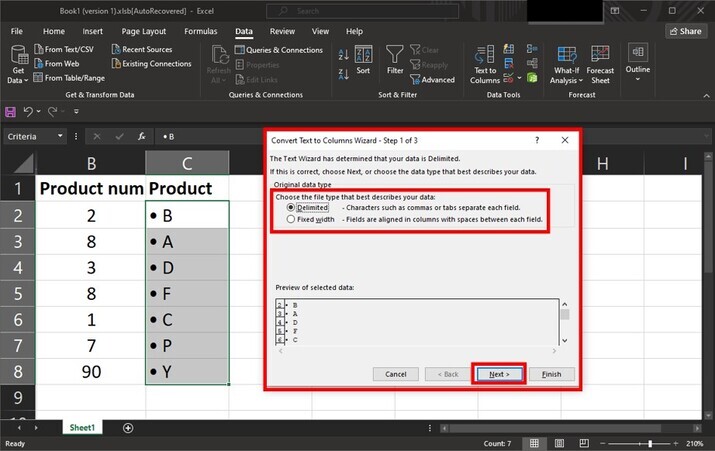
Step 4
Proceed through additional steps if necessary but refrain from adding any separators (like in this case bullet points).
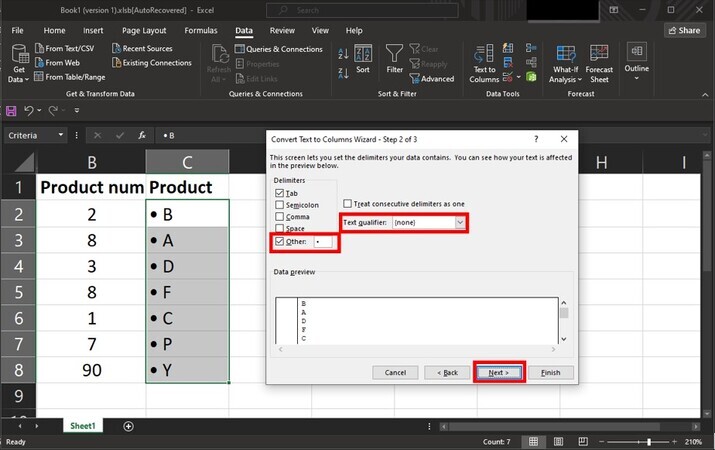
Step 5
Click "Finish". This operation informs Excel that each cell contains individual values rather than parts separated by bullets or numbering. Consequently, the unwanted characters will be removed entirely.
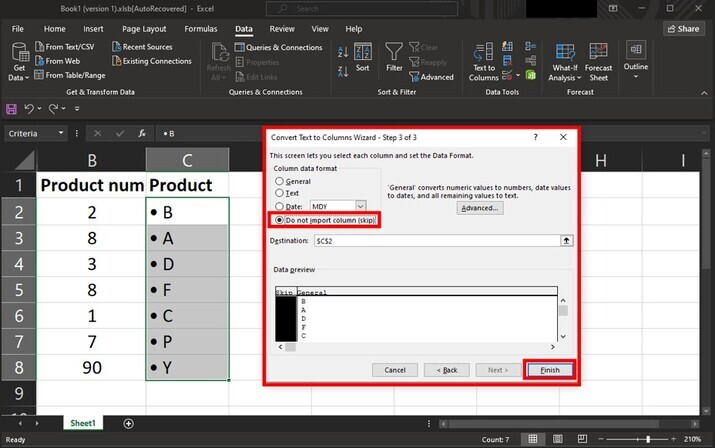
Step 6
The final window after removing the bullet points is displayed as below.
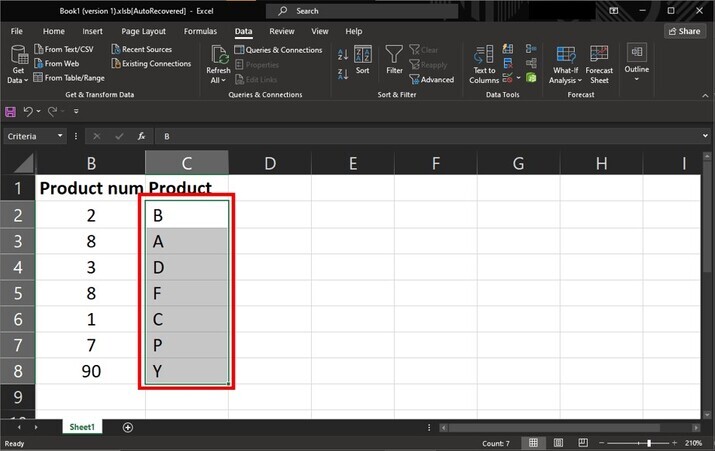
Conclusion
When working with Excel spreadsheets filled with numbers or bullets, cleaning up columns can be time?consuming if we do not know how to approach them effectively. By using either the Find and Replace function or the text?to?column option, we can quickly rid an entire column of numberings or bullet points based on our preference. Armed with these efficient techniques, we will streamline our Excel file organization while maintaining data integrity for enhanced readability and presentation.

